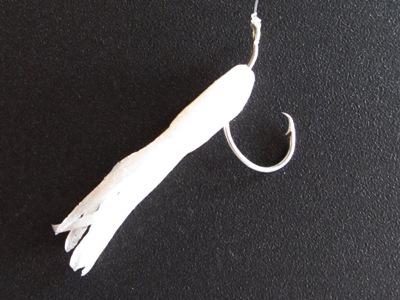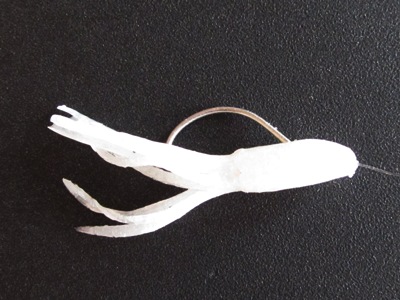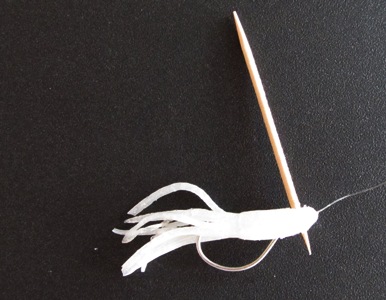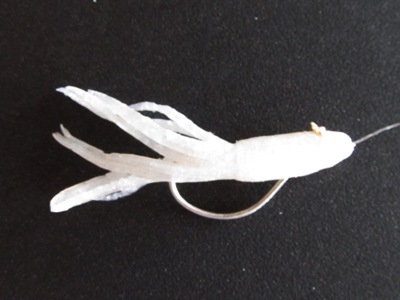Tube lures are a favorite choice for catching crappie, sunfish, bass, pickerel and other species. These highly effective lures are often fished on jig heads, but when weeds are thick in productive fishing areas, weedless tube rigs can make the difference between success and a disappointing trip. The effectiveness of these rigs is partly due to their near-neutral buoyancy.
Rigging tube bodies is very easy. To rig a small tube lure for panfish, all that is required is a selection of bodies, few hooks and if desired, a supply of toothpicks. For panfish, an ultralight spinning outfit is essential when fishing weedless tube lures. Line choices should be limited to 6 pound test or smaller, in order to achieve reasonable casting distances. The rig can be fished in a variety of situations, although it is designed for fishing areas of dense vegetation.
When choosing hooks, several styles can be adapted. Regardless of the hook shape, non-offset hooks should be used in order to reduce spinning. Circle hooks work well for this rig as their barbs are naturally turned inward, further reducing snags. For anglers that are not comfortable using circle hooks, kahle hooks or other light wire, non-offset styles can be modified. The important thing is to be able to bend the hook shank and bend into the correct shapes.
The basic weedless-weightless tube lure design can be improved upon by pinning the body to the hook. Pinning helps prevent fish from pulling the body down the hook during the strike. Pinning a tube body can be accomplished by passing a toothpick thru the lure body, into the hook eye and back out the other side of the body. The toothpick is then broken off, leaving little to no material protruding out of the body. If desired, a small swivel can be added about 18 inches above the hook to reduce line twist.
Panfish anglers may also choose to add a short section of nightcrawler or other natural bait on the hook. When rigged correctly, there is just enough room on the hook shank for a morsel of bait. Adding bait should be done carefully as any non-symmetrical shaped pieces will cause the lure to spin during retrieval or otherwise hinder the motion of the rig. When rigged correctly, baits actually act as a keel to help stabilize the rig and improve its action when moved thru the water.
For smallmouth or largemouth bass, the same technique can be used with larger tubes and standard offset shank worm hooks. Depending on angler preferences and local conditions, bass anglers usually select tube bodies in the 3-6 inch range. Like most soft plastics, these designs come in a myriad of colors, shapes, tentacle styles and other attributes. Tube bodies are even available in scented versions.
Fishing the weedless tube lure requires a slightly different technique than standard jigs or Texas rigged worms. Tube bodies can be casted into openings in weed beds and allowed to sink a foot or 2 before slowly being worked back towards the boat. The natural action of the tentacles creates interest from fish without additional movement.
Another effective technique is to cast the lure and immediately jig it sharply across the surface. This method usually works best around sunrise and sunset. Larger tube rigs will float initially and work especially well for catching largemouth bass among heavy surface weeds.
When fishing for smallmouth bass in areas where crayfish are found, choosing the correct color and allowing the lure to sink deeper can improve fishing success.
How to Rig A Weedless Tube Lure




Other Tube Rigs
The weedless tube rig can be combined with other rigs to increase its effectiveness. For example, it can be used as the top lure for tandem rigs. Because of their near neutral buoyancy, they work well when rigged in tandem with a jig or other weighted lure. Weedless tubes can also be rigged using the popular dropshot configuration. These can be highly effective when slowly jigged along drop offs, bottom structure or other areas where fish are congregated. When vegetation does not reach the surface, tube bodies can be effective rigged on weedless jig heads. These special jig designs incorporate a bristle in front of the hook point to deflect snags.